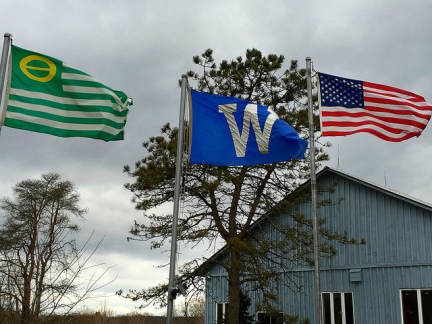We had our first field trip to the Field Station this Tuesday. Going to the Field Station, I knew that there would be many different types of birds at the Field Station, but what I didn’t know was how hard it would be to actually spot them.
Dr. Duerr told us that one of the best ways to learn about a bird is to learn to associate bird sounds to the individual species. However, trying to actually find the bird that is making the call is harder than it seems. There were many instances in which we would hear a bird, but no matter how hard we searched, we wouldn’t be able to find it. Was it because of the brushy terrain or maybe the cold windy weather?

After doing some research, it seems that there are other reasons aside from just being windy that cause some birds to remain unseen in thick brushy landscapes. Thinking about it, it makes sense that birds use these brushy areas to take cover from the wind for warmth. However, these brushy areas serve another purpose when it comes to food sources. Reading from a website on winter birds, in the winter, insects become more scarce, leading birds to focus more on foraging for seeds and berries. Consequently, these are both food sources that are found in thick bushy landscapes. Larger trees are less likely to provide this resource in the winter. Furthermore, this thick low brush could serve as protection against predation compared to taller trees which are more exposed.

While we did struggle with seeing birds in these brushy areas, this didn’t limit us completely. We still saw considerable amounts of birds flying in the sky and perched higher up in the taller trees. Again, thinking about the wind, it is clear now why we saw a few raptors in the sky. According to the Cornell Lab of Ornithology raptors such as the Red-tailed Hawk, when flying in windy conditions, hover without flapping while facing the wind. We noticed this behavior because we saw raptors flying in the opposite direction that the flags were blowing towards.
Aside from raptors, we noticed a flock of Dark-eyed Juncos. This made me think, “what purposes does flying in flocks serve?” Considering the windy conditions, I thought that maybe this would serve some purpose in keeping warm. However, it makes more sense that a flock of perched birds (but not flying) would be warmer while in this closer proximity. On the other hand, Audubon points out that flying in flocks would be safer and less risky than flying on their own out in the open. This was especially true, considering the raptors we say soaring above.

While considering the features of flying and safety, I’ve stumbled upon a revelation. Doesn’t it make sense, biologically, that many birds have darker feathers on their wings and upper-body/back while having a lighter underbelly? Think about it! If a predator sees a bird flying below, camouflage is of the essence and a darker upper body is more likely to blend in with the landscape below. If a bird is flying above the predator, the lighter underbelly would blend in more with the lighter colors of the sky.
All in all, it was a really fun experience birding at the Field Station and I would recommend it to anyone, even if it’s just for a simple walk. Time definitely flew by as we birded and explored the different habitats along the paths around the Field Station.

